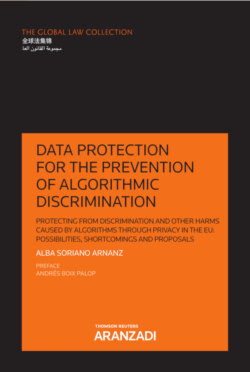Читать книгу Data protection for the prevention of algorithmic discrimination - Alba Soriano Arnanz - Страница 15
На сайте Литреса книга снята с продажи.
3. The application of automated systems
ОглавлениеThe technologies that have been described in the previous section have enabled both public and private organisations to take automated decision-making to the next level. The amount of data that can now be processed and the capacity that machine learning tools have to extract relevant information has allowed for the development of much more complex decision-making systems. Hence, on top of the simple decision-making systems that have already been put in place for many years, a large number of possibilities have opened up, enabling the public and private sector to maximise process efficiency.76
As the following pages will convey, algorithms and other technological-related applications have become an essential part of many aspects of modern Western societies.77 The reason why algorithms have become so prevalent and are being used for many different purposes is the rate at which technology, and particularly, computational capacity, is evolving.78 Automated processes are being constantly and very rapidly developed and improved and are easily introduced in environments, such as smart cities, in which the use of these systems is becoming increasingly common.79 Thus, to a certain extent, it can be argued that algorithms produce a series of benefits that outweigh the risks and costs generated by automatisation. Nonetheless, in some cases, it does seem like the risks and costs of automated systems are not being sufficiently taken into consideration by the individuals and organisations employing them.
The rapid integration of these technologies in both the private and public sector brings about a series of concerns regarding the paradigm shift many areas of society will undergo. Particularly, with regard to the public sector, the use of machine learning models by public institutions unavoidably forces us to rethink the principles of democratic governance and administrative law,80 especially if algorithms are being used in public decision and rule-making.81
As the examples provided in the following pages convey, algorithms increasingly impact human lives,82 generating a greater sense of urgency regarding the need for regulation. In fact, most of the reports published by public institutions have focused on the current and future social impact of algorithms,83 which range from the consequences that a substitution of the workforce by machines may have84 to the new challenges that are already arising regarding the protection of fundamental rights and freedoms. While all the risks generated by algorithms are closely related to each other, this work mostly focuses on the harms they cause to fundamental rights and freedoms.
The following pages offer a general overview of the ways in which algorithms are used in both the public and private sectors in order to convey the degree of penetration of complex automated decision-making systems in different areas and also to highlight some of the uses that can generate a significant impact on individuals’ rights in a direct or indirect manner.
